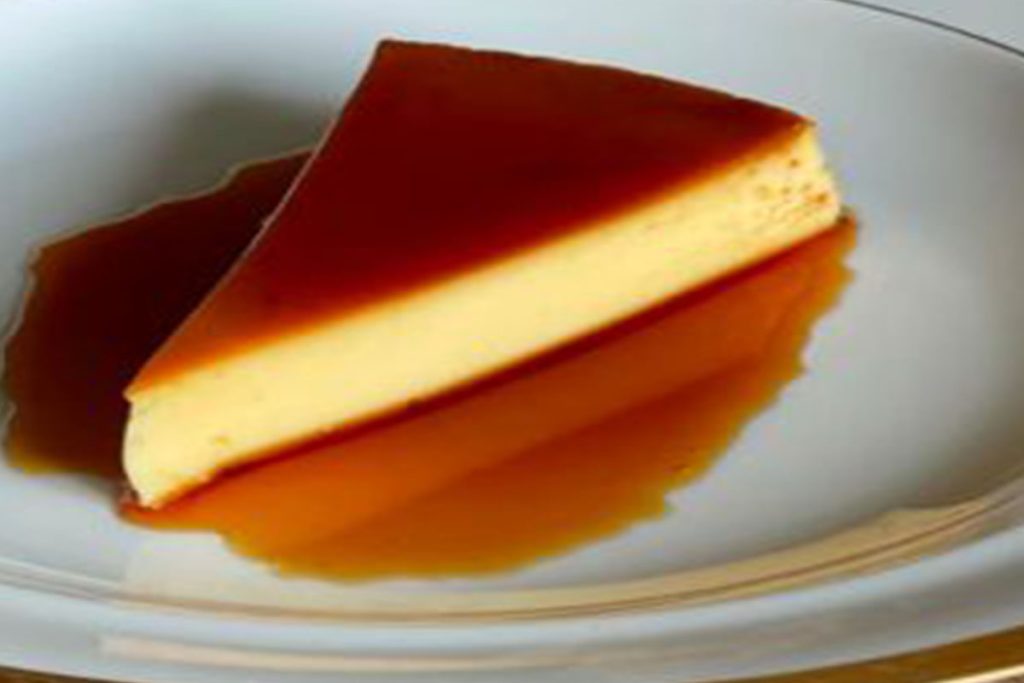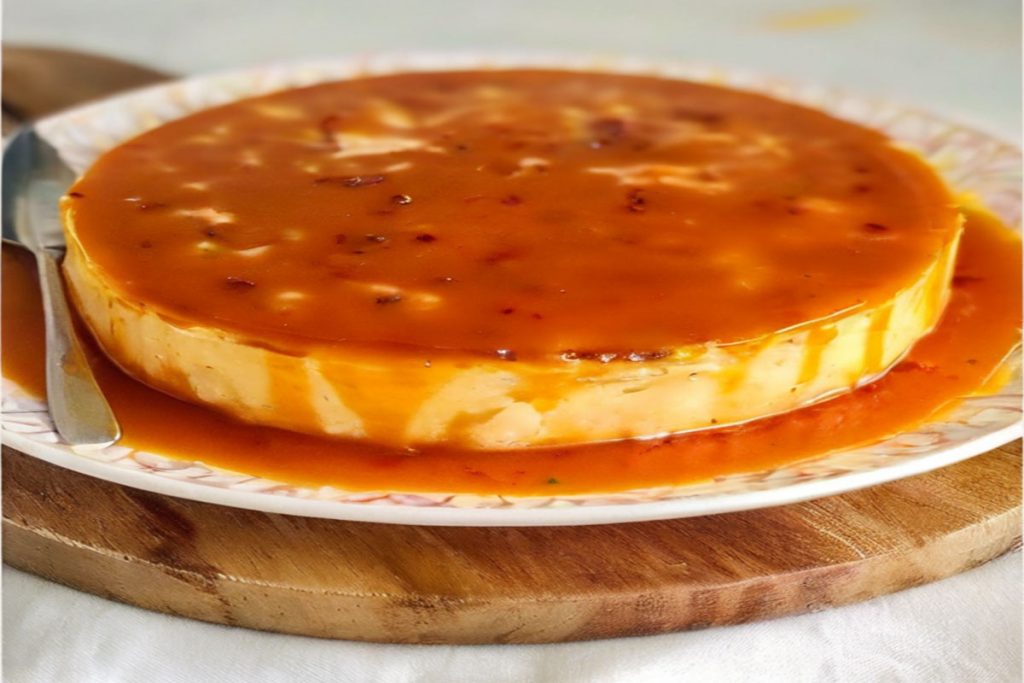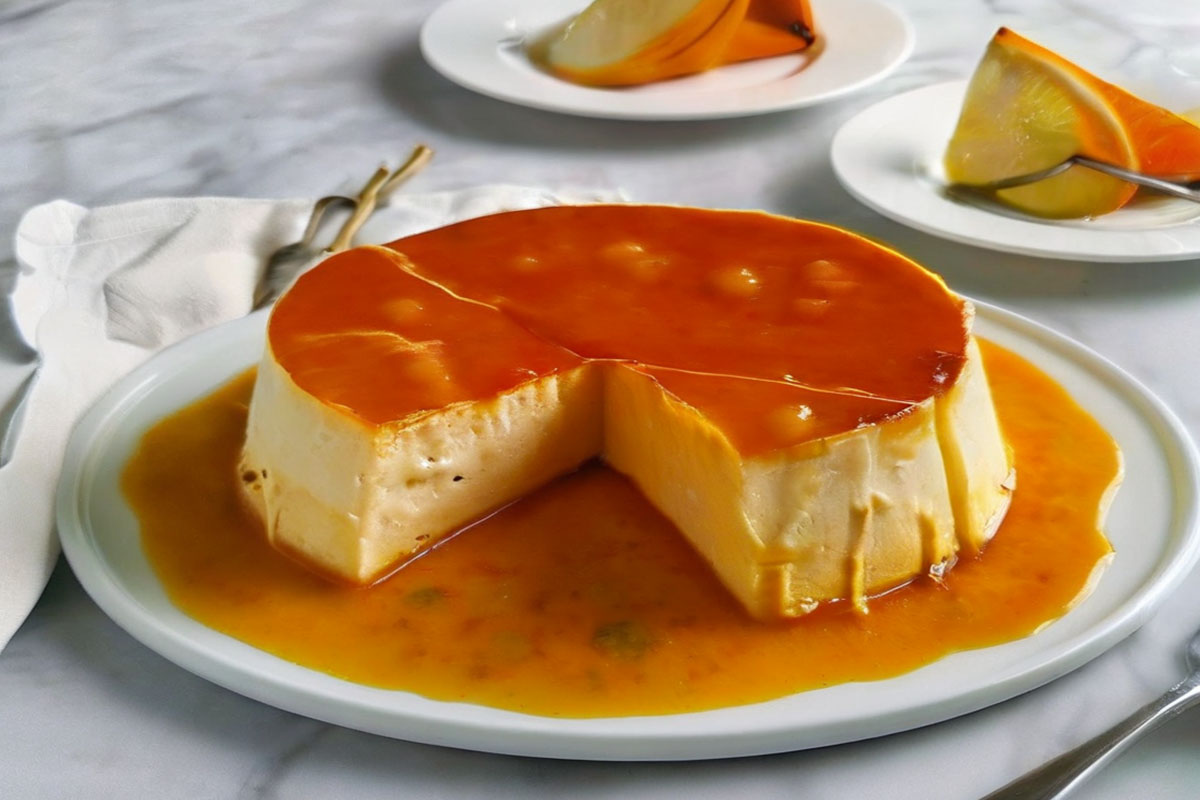What is Quesillo?
Understanding Quesillo in Latin American Culture
Quesillo Origins and Etymology
Quesillo, though it may sound like a type of cheese to English speakers, holds a unique position in Latin American cuisine. In fact, the word quesillo translates to “little cheese” in Spanish, but don’t be fooled—it’s not simply a miniature cheese! This dish has evolved beyond its literal translation to become a beloved dessert, particularly in countries like Venezuela, Nicaragua, and Mexico.
The roots of quesillo trace back to indigenous Latin American communities, where simple ingredients like eggs, milk, and sugar were used to create flavorful, custardy dishes. Over time, quesillo became a staple dessert with variations emerging across Latin America, each with its own twist. Despite regional tweaks, quesillo remains a symbol of comfort and tradition, cherished across generations.
For a deeper understanding of the cultural background of quesillo, check out the History of Latin American Cuisine.
Traditional Uses and Symbolism
Quesillo isn’t just a dessert; it’s part of family gatherings, celebrations, and holidays in Latin American culture. Often served at festive events, it signifies warmth and shared moments. This humble dessert brings a creamy richness that delights both kids and adults alike, highlighting the beauty of simple ingredients transformed by traditional techniques.
What Does Quesillo Mean in English?
Translation and Common Misinterpretations
In English, quesillo might be interpreted as a type of cheese or a cheesy dessert, which can lead to confusion. While its name might suggest cheese, quesillo is a dessert similar to a custard or flan, featuring a smooth, creamy texture. This unique identity often leads English speakers to compare it with the familiar “flan,” but quesillo is distinct in its simplicity and regional authenticity.
Difference Between Quesillo and Cheese
Although it translates as “little cheese,” quesillo is not a cheesy dish! The term instead speaks to its texture, which can be somewhat firm but remains soft, like a custard. Unlike cheese, quesillo is sweet, often flavored with caramel, vanilla, or even cinnamon. Think of it as a fusion between custard and flan rather than a dairy-rich cheese. So, while it shares a similar name, quesillo is an entirely unique creation, capturing the essence of Latin American desserts.
Types of Quesillo Across Regions
Regional Variations of Quesillo
Quesillo in Mexico vs. Venezuela vs. Nicaragua
While quesillo may share a name across Latin America, it has developed unique flavors and textures in different countries. In Mexico, quesillo generally refers to a type of stringy cheese, similar to mozzarella. Mexican quesillo, commonly used in dishes like quesadillas and tacos, is known for its mild flavor and melt-in-your-mouth texture. However, in Venezuela and Nicaragua, quesillo has an entirely different identity—it’s a dessert!
In Venezuela, quesillo is a custard-like dessert similar to flan but with a lighter, airier texture. Venezuelan quesillo typically includes eggs, condensed milk, sugar, and sometimes vanilla. This version is beloved for its smooth consistency and sweet caramel layer on top. Meanwhile, in Nicaragua, quesillo takes on yet another form—a street food snack consisting of a thick corn tortilla filled with cheese, pickled onions, and a dash of sour cream. It’s savory, delicious, and far from the dessert known in Venezuela.
How Texture and Flavor Vary by Country
Each country’s version of quesillo showcases regional preferences for texture and flavor. In Venezuela, the dessert is creamy with a melt-in-the-mouth softness, thanks to the use of condensed milk and fewer eggs, which lend it a lighter feel. Nicaraguan quesillo, on the other hand, has a more substantial, rustic quality since it’s served as a savory snack with corn tortillas, creating a chewy, satisfying texture.
Mexican quesillo, though primarily a cheese, shares the smoothness found in the Venezuelan version, albeit with a firmer bite. These variations highlight how a single term, quesillo, can mean very different things across borders, each equally cherished by locals.
Popular Dishes Made with Quesillo in Each Region
In Mexico, quesillo is a staple in Oaxacan cuisine, especially in dishes like enchiladas, chiles rellenos, and various types of quesadillas. Its meltability and mild flavor make it versatile for traditional Mexican recipes. Venezuelan quesillo, as a dessert, is often the star of family gatherings, served with a caramel drizzle that adds an extra layer of sweetness.
In Nicaragua, quesillo is famously enjoyed as a street food snack, where vendors often prepare it fresh. This Nicaraguan version has become a cultural icon, and visitors will often see locals enjoying it on the go, wrapped in wax paper. Despite the differences, each version of quesillo reflects a cultural love for simple, comforting flavors—whether they’re savory, sweet, or cheesy.
Quesillo vs. Flan vs. Cheese
Comparing Quesillo with Similar Terms
What Makes Quesillo Different from Flan?
Though quesillo and flan appear similar, they have distinct differences that set them apart. Flan, often found in Spanish and Latin American cuisines, is typically a custard dessert with a dense, smooth texture and a caramel topping. Quesillo, particularly in Venezuela, looks like flan but has a unique twist—it’s lighter and airier due to fewer eggs and sometimes has small air pockets throughout. These tiny holes give quesillo a spongy feel, unlike the silky texture of flan.
In flavor, quesillo is also typically sweeter than flan, often using sweetened condensed milk for extra richness. While both desserts might appear on the same table, quesillo’s distinctive mouthfeel and slight caramelization make it a unique experience. If you ever find yourself choosing between the two, expect quesillo to bring a bit more lightness to your palate!
If you’re curious about other desserts from Venezuela, explore the various Traditional Venezuelan Desserts that showcase the region’s rich culinary heritage.
Is Quesillo the Same as Cheese?
Despite its name, quesillo isn’t simply a cheese. While “quesillo” translates to “little cheese,” it’s rarely made from cheese, especially when referring to the dessert version in Latin American countries. In Mexico, though, quesillo does indeed refer to a specific type of cheese, known for its stretchy, mozzarella-like quality. This cheese, used frequently in Oaxacan dishes, differs significantly from the custard-based quesillo in Venezuela.
The connection between these vastly different foods lies in the name, which nods to the smooth, creamy texture shared by both cheese and the dessert. Yet, they’re entirely different culinary creations!
How to Differentiate Quesillo from Other Dairy Products
When identifying quesillo, it helps to remember its specific form in each region. In Venezuela, quesillo is unmistakably a dessert, easily recognized by its caramel topping and custard-like consistency. In Nicaragua, quesillo is a savory snack featuring a corn tortilla and cheese, making it more substantial and chewy than a typical dessert. Mexican quesillo stands apart as a cheese used in hot dishes, stretching beautifully when melted.
In short, quesillo defies easy categorization—it’s not a straightforward dairy product or dessert, but rather a versatile name that embodies both sweet and savory elements, varying beautifully across Latin American kitchens.
How Quesillo is Made
Traditional Methods for Making Quesillo

Step-by-Step Process of Making Venezuelan Quesillo
Making Venezuelan quesillo at home is surprisingly simple and requires only a few ingredients. This traditional dessert comes together with a blend of eggs, condensed milk, regular milk, and a hint of vanilla. Here’s a quick look at the steps:
- Prepare the Caramel: Start by heating sugar in a saucepan over medium heat. Stir continuously until it melts into a golden caramel. Quickly pour this caramel into the bottom of a round mold or flan dish, tilting the dish to coat the base evenly. Let it cool for a few minutes.
- Make the Custard Mixture: In a blender, combine eggs, condensed milk, regular milk, and vanilla extract. Blend until smooth, but avoid overmixing as it can lead to bubbles in the final dessert.
- Pour and Bake: Pour the custard mixture over the caramel in the mold. Cover the mold with aluminum foil, then place it in a larger baking pan filled with hot water, creating a bain-marie, or water bath, to ensure even cooking. Bake at 350°F (175°C) for about 45-60 minutes, or until a knife inserted in the center comes out clean.
- Cool and Serve: Allow the quesillo to cool to room temperature, then refrigerate for at least 2 hours. When ready to serve, invert the mold onto a plate to reveal the caramel topping.
Ingredients Needed and Alternatives
The ingredients for quesillo are simple, but a few substitutions can make it more accessible without sacrificing flavor. Here’s what you’ll need:
- Eggs: Essential for binding the custard and giving it structure.
- Condensed Milk: Adds sweetness and creaminess; substitute with evaporated milk and sugar if needed.
- Whole Milk: Provides additional liquid to balance the custard. Almond milk or coconut milk can work as non-dairy alternatives, though they’ll slightly alter the flavor.
- Vanilla Extract: Brings a warm, aromatic note that enhances the custard’s flavor. Vanilla beans can be used for a more intense taste.
For those seeking a slightly lighter version, you can use low-fat milk or reduce the amount of condensed milk, but these adjustments may affect the final texture.
Common Techniques and Tips for Authentic Quesillo
Creating authentic quesillo comes down to a few key techniques:
- Use a Bain-Marie: Baking quesillo in a water bath helps it cook evenly and prevents cracking. This technique also gives it a creamy, tender texture.
- Avoid Overmixing: Blending the custard mixture too much can lead to air bubbles, which disrupt quesillo’s smooth consistency.
- Cool Before Serving: Letting the quesillo cool in the refrigerator allows the caramel to firm up, making it easier to unmold.
By following these tips, you’ll achieve a perfectly smooth, melt-in-your-mouth quesillo that captures the essence of this cherished Latin American dessert.
Serving and Eating Quesillo
Best Ways to Enjoy Quesillo
How to Serve Quesillo: Warm vs. Cold
When it comes to serving quesillo, the temperature can play a big role in the overall experience. Traditionally, quesillo is enjoyed cold, fresh from the refrigerator. This chilled state allows the flavors to meld beautifully, and the smooth texture offers a delightful contrast to the caramel sauce.
However, some people prefer to serve it warm, just after it’s been baked. When served warm, the caramel is runnier, creating a more indulgent treat. If you choose to serve it warm, let it cool slightly before serving, but enjoy it shortly after baking for a cozy dessert experience. Whether warm or cold, quesillo promises a sweet delight that’s hard to resist!
Pairing Quesillo with Other Flavors
Quesillo has a mild sweetness that pairs well with various flavors. Consider drizzling it with fresh fruit sauces, like raspberry or mango, to add a tangy twist. Fresh berries, such as strawberries or blueberries, can also enhance the dessert’s appeal and provide a burst of freshness.
If you’re feeling adventurous, try adding a sprinkle of cinnamon or a touch of nutmeg for a warm spice kick. Additionally, serving quesillo with a dollop of whipped cream or a scoop of vanilla ice cream elevates this dessert to a whole new level. These combinations make every bite an exciting experience!
Variations of Quesillo Recipes
While traditional quesillo is beloved, there are countless variations to explore! Some people like to incorporate flavors like coconut or chocolate. To make a coconut quesillo, simply substitute some of the milk with coconut milk or add shredded coconut into the mixture.
For a chocolate twist, consider mixing in cocoa powder or melted chocolate into the custard base before baking. You could even create a layered quesillo by alternating layers of different flavors in your mold for a visually stunning dessert.
Experimenting with these variations allows you to enjoy quesillo in new and exciting ways, catering to different tastes and preferences. Ultimately, this beloved dessert can be customized to suit your palate, making it a versatile addition to any dessert table.
Nutritional Value and Benefits of Quesillo
Is Quesillo Healthy?
Calories and Nutritional Composition of Quesillo
Quesillo is a delightful dessert, but like many treats, it’s important to consider its nutritional value. A typical serving of Venezuelan quesillo contains around 150 to 200 calories, depending on the ingredients used. This dessert is rich in protein due to the eggs and provides carbohydrates from the sugar and milk.
In terms of composition, quesillo typically includes essential nutrients such as calcium, vitamin D, and riboflavin, thanks to its milk and egg content. However, it can be high in sugar and fat, especially when using sweetened condensed milk. Therefore, while it offers some nutritional benefits, moderation is key when enjoying this sweet treat.
For more information on the nutritional aspects of dairy products and their health benefits, visit Nutritional Benefits of Dairy Products.
Health Benefits and Potential Drawbacks
One of the health benefits of quesillo is its protein content, which supports muscle growth and repair. Additionally, the calcium found in the dairy ingredients can promote strong bones and teeth.
However, there are potential drawbacks to consider. The high sugar content can contribute to excess calorie intake, which may lead to weight gain if consumed excessively. For those with lactose intolerance, traditional quesillo can pose digestive issues.
Ultimately, quesillo can be enjoyed as an occasional treat. By balancing it with a healthy diet and active lifestyle, you can savor the rich flavors of this beloved dessert while also maintaining your well-being. Enjoying it in moderation ensures you can appreciate its creamy goodness without overindulging.
Frequently Asked Questions (FAQs) About Quesillo in English
FAQs on Quesillo Translation and Culinary Usage
What is the Difference Between Quesillo and Cheese?
The main difference between quesillo and cheese lies in their preparation and use. In Mexico, quesillo refers to a type of stringy cheese, often used in cooking due to its melting qualities. However, in Venezuela, quesillo is a dessert similar to flan, made from eggs, milk, and sugar. While both share the same name, they are distinct culinary items, with one being a savory cheese and the other a sweet treat.
Why is Venezuelan Quesillo Sometimes Called Flan?
Venezuelan quesillo is sometimes referred to as flan due to its custard-like consistency and sweet flavor. However, they are not identical. Flan typically has a denser texture, while quesillo is lighter and airier because of the fewer eggs used in its preparation. Both desserts are popular in Latin America, and their similarities can lead to the interchangeable use of names, particularly among those unfamiliar with the specific dishes.
Can Quesillo Be Found Outside Latin America?
Yes, quesillo can often be found in Latin American restaurants around the world, especially in areas with significant Latin American communities. Many restaurants feature Venezuelan desserts on their menus, so it’s worth looking for authentic quesillo if you’re craving this sweet treat. Additionally, some specialty grocery stores may stock it or the ingredients needed to make it at home.
How Do You Store Quesillo Properly?
To store quesillo, allow it to cool completely after baking, then cover it tightly with plastic wrap or foil. It can be kept in the refrigerator for up to three days. If you want to keep it longer, consider freezing it. Just be sure to wrap it well to prevent freezer burn. When ready to eat, thaw it in the fridge overnight and serve chilled or at room temperature.
Is Quesillo Easy to Make at Home?
Absolutely! Making quesillo at home is relatively straightforward, even for beginner bakers. With just a few ingredients—eggs, condensed milk, milk, and vanilla—you can whip up a delicious dessert. Following a simple recipe, such as the one outlined in earlier sections, allows anyone to create this delightful treat and impress friends and family with a taste of Latin American cuisine.
This FAQ section provides clarity on common questions surrounding quesillo, ensuring readers gain a better understanding of this popular Latin American dessert. If there’s anything more you’d like to include or adjust, feel free to let me know!


